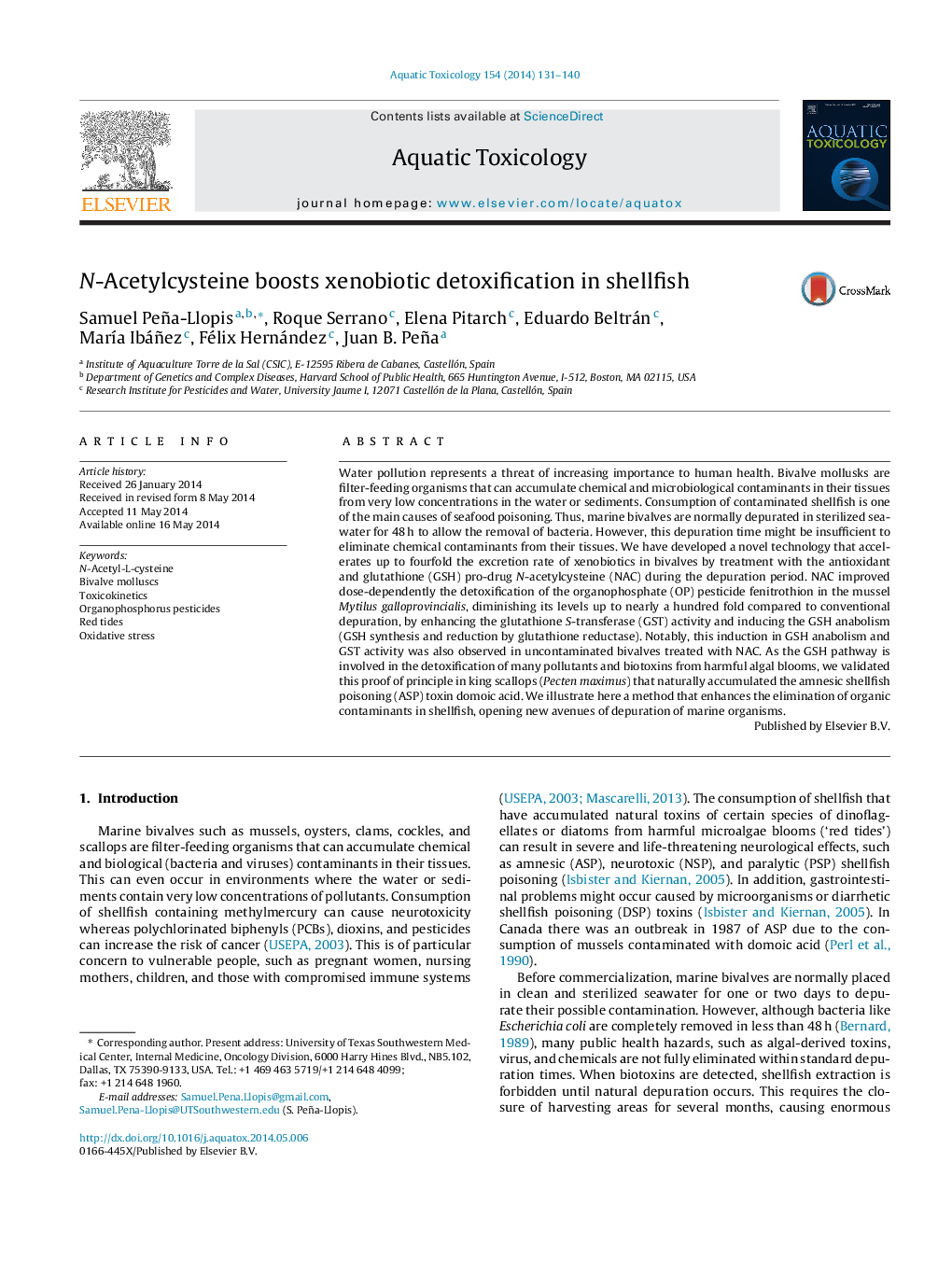| Article ID | Journal | Published Year | Pages | File Type |
|---|---|---|---|---|
| 4529212 | Aquatic Toxicology | 2014 | 10 Pages |
•We developed a methodology to enhance the removal of xenobiotics in marine bivalves.•NAC boosts the glutathione anabolism (GSH synthesis and reduction) and GST activity.•Depuration of OP-poisoned mussels with NAC mitigates the GSH metabolism impairment.•NAC accelerates up to fourfold the excretion rate of fenitrothion in mussels.•Validation in king scallops naturally contaminated with biotoxin domoic acid (ASP).
Water pollution represents a threat of increasing importance to human health. Bivalve mollusks are filter-feeding organisms that can accumulate chemical and microbiological contaminants in their tissues from very low concentrations in the water or sediments. Consumption of contaminated shellfish is one of the main causes of seafood poisoning. Thus, marine bivalves are normally depurated in sterilized seawater for 48 h to allow the removal of bacteria. However, this depuration time might be insufficient to eliminate chemical contaminants from their tissues. We have developed a novel technology that accelerates up to fourfold the excretion rate of xenobiotics in bivalves by treatment with the antioxidant and glutathione (GSH) pro-drug N-acetylcysteine (NAC) during the depuration period. NAC improved dose-dependently the detoxification of the organophosphate (OP) pesticide fenitrothion in the mussel Mytilus galloprovincialis, diminishing its levels up to nearly a hundred fold compared to conventional depuration, by enhancing the glutathione S-transferase (GST) activity and inducing the GSH anabolism (GSH synthesis and reduction by glutathione reductase). Notably, this induction in GSH anabolism and GST activity was also observed in uncontaminated bivalves treated with NAC. As the GSH pathway is involved in the detoxification of many pollutants and biotoxins from harmful algal blooms, we validated this proof of principle in king scallops (Pecten maximus) that naturally accumulated the amnesic shellfish poisoning (ASP) toxin domoic acid. We illustrate here a method that enhances the elimination of organic contaminants in shellfish, opening new avenues of depuration of marine organisms.
Graphical abstractFigure optionsDownload full-size imageDownload as PowerPoint slide
